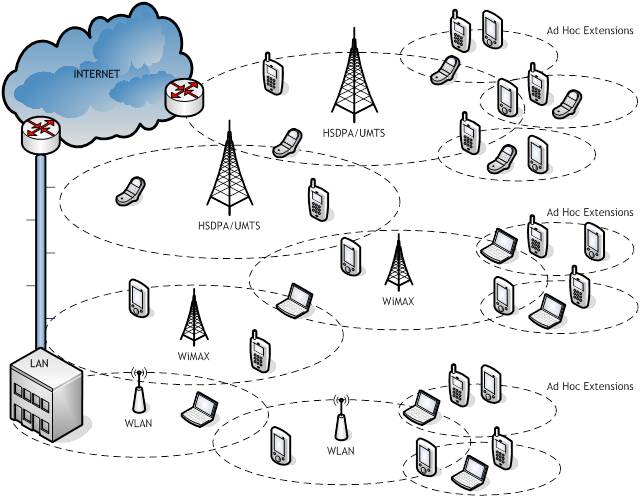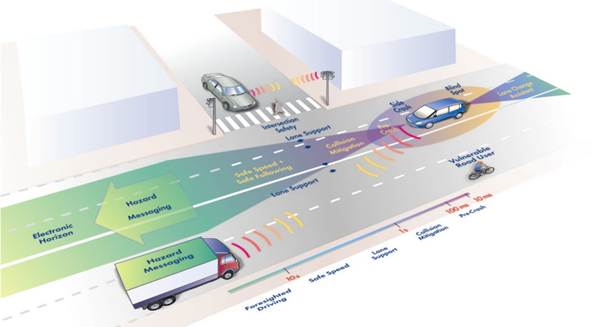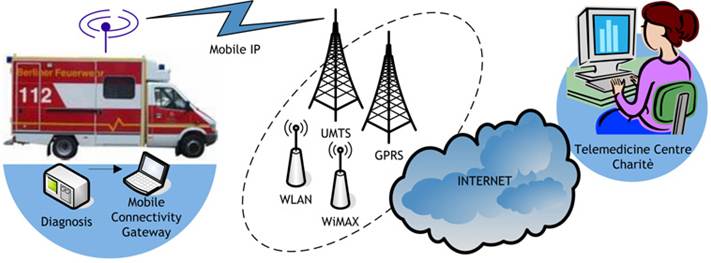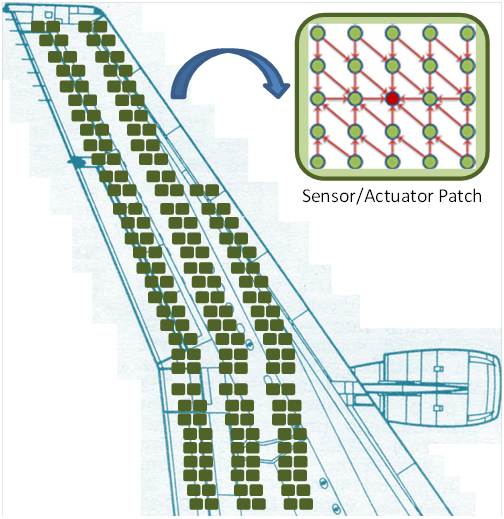Research
Kaan Bür, Associate Professor
| Triggered by the emergence of low-cost wireless network interfaces in the consumer electronics market, new communication paradigms gained interest in a relatively short period of time. One of the concepts that have been developed in this era is the mobile ad hoc networks (MANET), which envision networked services for mobile computer users in areas without any pre-existing infrastructure. From a theoretical perspective, MANET have been a very productive research area in the last decade. However, they have not been widely deployed until today. Recently, more pragmatic approaches emerged from the pure MANET paradigm, such as wireless sensor networks (WSN) and vehicular ad hoc networks (VANET), which attempt to combine theory and practice. Thus, starting from the initial all-purpose, large-scale MANET vision and its theoretical background, new and more practical research areas are yielded. |  |
Vehicular Ad Hoc Networks
 |
Vehicular communications are one of the new challenging application areas for mobile ad hoc networks, and vehicle collision warning is one of the very promising potential applications in this field, since traffic accidents cause hundreds of thousands of fatalities and injuries every year. Due to the life-critical nature of emergency applications, however, it is essential to ensure the solutions to be deployed work with almost 100% success rate, thus meeting the high standards required, even under extremely unfavourable conditions. In sparse networks, for instance, where node connectivity is low, message dissemination becomes very difficult, and it is necessary to take additional measures in order to keep all nodes informed. In our study, we worked on a power adaptive selective broadcast algorithm for information dissemination in vehicular ad hoc networks. To improve the collision warning delivery ratio in sparse networks, the vehicles in our algorithm gradually increase their transmission power with each repeated message. We have compared the warning delivery performance of our algorithm to other, non-adaptive, selective broadcast protocols and to flooding, under identical, realistic simulation conditions. The results we have obtained show that it is possible to achieve a significantly higher warning delivery success rate with an adaptive protocol, particularly in sparse networks, where other algorithms suffer from lack of connectivity. The results also help us to understand better the design requirements of a high-performance intelligent broadcast algorithm. |
Vehicle-to-Infrastructure Communications
|
The inclusion of wireless technologies accelerated the integration of existing network infrastructures and, thus, contributed greatly to the availability of communication networks. As the resulting heterogeneous networks became easier to access and more reliable to depend on, novel services such as vehicular emergency applications emerged. Being life-critical, these applications require connectivity throughout the heterogeneous network, while also having high resource demands. Wireless technologies need to be improved further to address these issues effectively. 3GPP Long-Term-Evolution (LTE) is another technology that can be used for vehicular communication. LTE is a standard which is considered as preliminary of next generation of mobile communication (4G). It offers a cellular infrastructure based solution (V2I) for safety function. In this project, defined in close cooperation with and run under the support of Volvo Cars, we investigated vehicle-to-infrastructure communication for active safety appllications. Furthermore, we evaluated the performance of different downlink scheduling strategies under various urban and rural scenarios, in which voice, video and safety data traffic coexist. The traffic safety application scenarios we considered were variations of collision avoidance using LTE-based broadcast communication. |
 |
Wireless Sensor and Actuator Networks
 |
Wireless sensor networks (WSN), a special type of MANET, became a very popular research topic in the last decade. The principle idea behind the WSN concept is to equip miniaturised and battery-enabled sensor devices with memory as well as processing and wireless transmission capabilities, thus enabling them to organise themselves and communicate with a data centre when deployed in areas, which are otherwise hard to reach. More recently, the success of the concept yielded its application in new areas which are even more hostile, like the body, wings, and engine of an aircraft, extending the idea to what is called wireless sensor and actuator networks (WSAN). It is perfectly possible to utilise WSN in motor vehicles to collect information on the status of the engine, brakes, and other critical systems. The information collected in this manner is real-time and very accurate, making it safe to use in applications like driver assistance and remote diagnostics, environment and hazardous area monitoring. The challenges of WSAN research, as defined by WSN researchers are mainly engineering-oriented and application-dependent, while researchers in automatic control tend to define WSAN as networked automatic control systems, or even as cyber-physical systems. Research on WSAN in the area of networked control systems is about the understanding of multiple, interconnected systems over realistic channels working together in a distributed way towards a common goal. New theoretical foundations and scientific models are needed to meet the communication and interaction challenges for the sensors and actuators in a complex control system to function correctly, such as action with insufficient information and under instable communication conditions. A very important application area for WSAN is environmental monitoring, coupled with the idea of taking the necessary actions autonomously by making use of the additional actuators. Hence, we can imagine "green cars" equipped with both WSAN and VANET for more energy-efficient driving. |